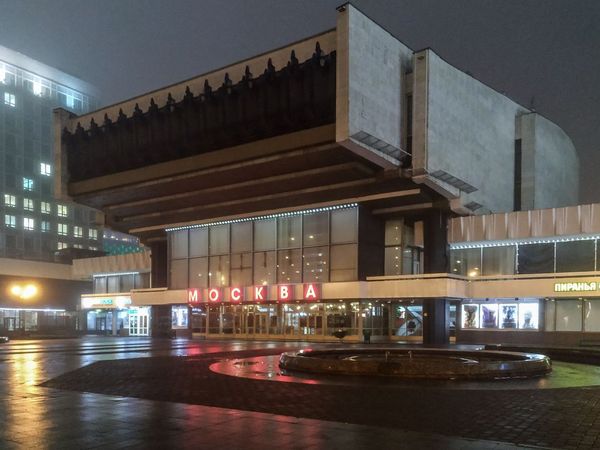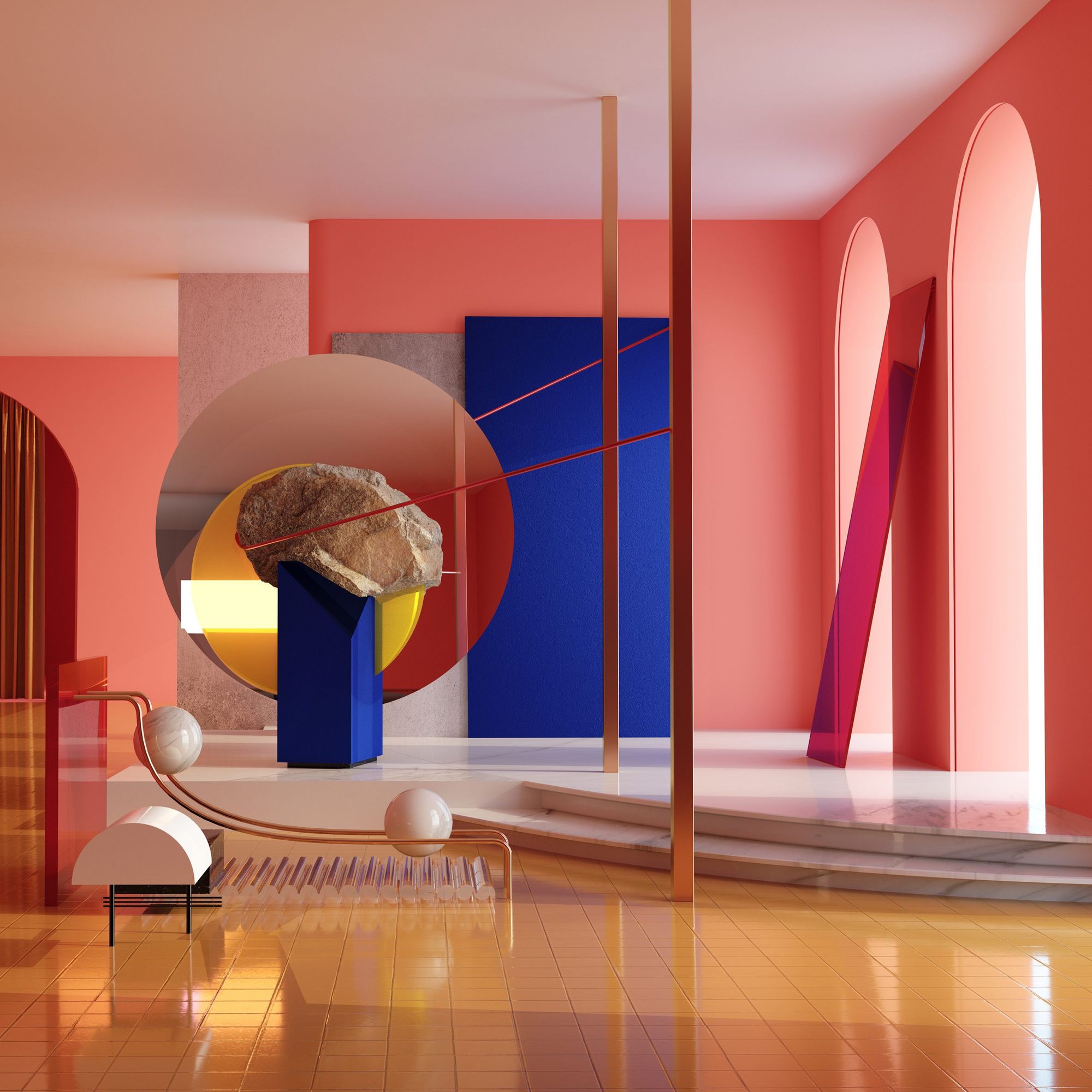A 21st-century form of artistic self-expression or an emerging genre of advertising? An escape from reality or a key to the architectural solutions of the future? Dreamscape illustrations popularized by Instagram’s algorithm may seem like featherweight eye-candy images at first, but in reality, there’s much more to them than you might think. Works by the genre’s renowned creators, Peter Tarka of Polish descent and Ukraine’s Ouum Studio, bring us closer to understanding the phenomenon of “dreamscapes”. This article was published in print in Hype&Hyper 2021/1.
Dreamscape illustrations are CGI images floating on the edge of reality and fantasy, visualizing urban spaces, nature and modern interiors spiced up with illusory elements. Although at first, they might seem nothing but fun eye-candy pictures, if we observe them closely, it’s easy to recognize that their prevalence opens up new perspectives in the analysis of several trends from the defining design movements of the past through the technological questions of the present to the future of advertising.
One of the most distinguished members of the dreamscape movement is Peter Tarka, a London-based, Polish-born art director and illustrator who dreamed up projects for AirBnB, Apple and Google, among others. On his Instagram page, however, instead of commissioned works, he showcases his personal compositions of charming visuality. His work echoes the influence of M. C. Escher – the Dutch graphic artist from the 20th century famous for his impossible concepts of space – just as much as surrealism or historical design movements. Tarka is inspired by both the movement of Bauhaus, which underpinned the principles of modern design, and Memphis, a postmodern group that defies the latter and heralds playfulness and emotional impulsivity instead of rigid rules. Similarly to Peter Tarka, the Ukrainian Ouum Studio also draws on the design ambitions of the ’60s and ’70s, motivated by the creations and ideas of Verner Panton, Ettore Sottsass and Joe Colombo, to name a few. But why is the dreamscape movement fueled the most by this exact era?
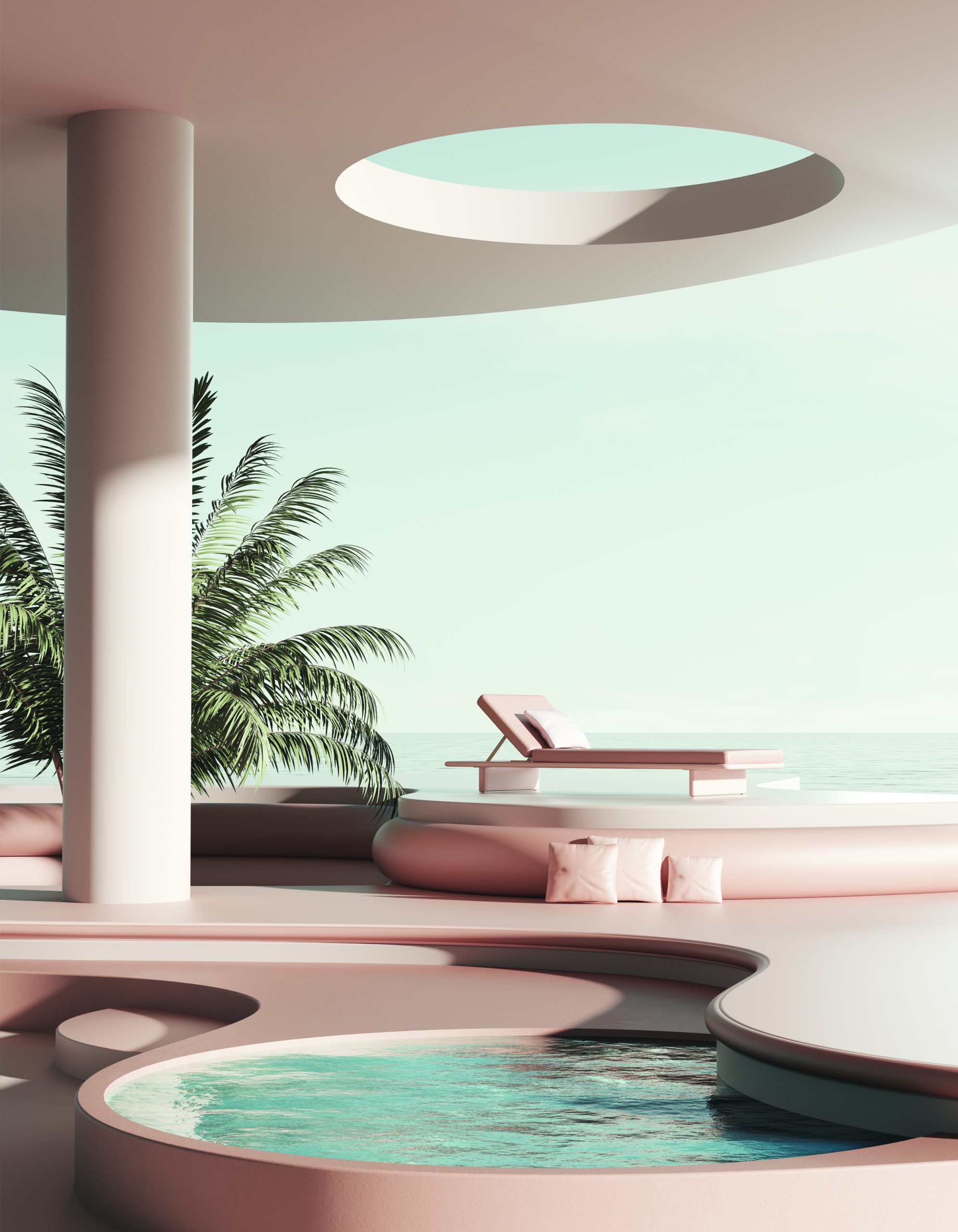
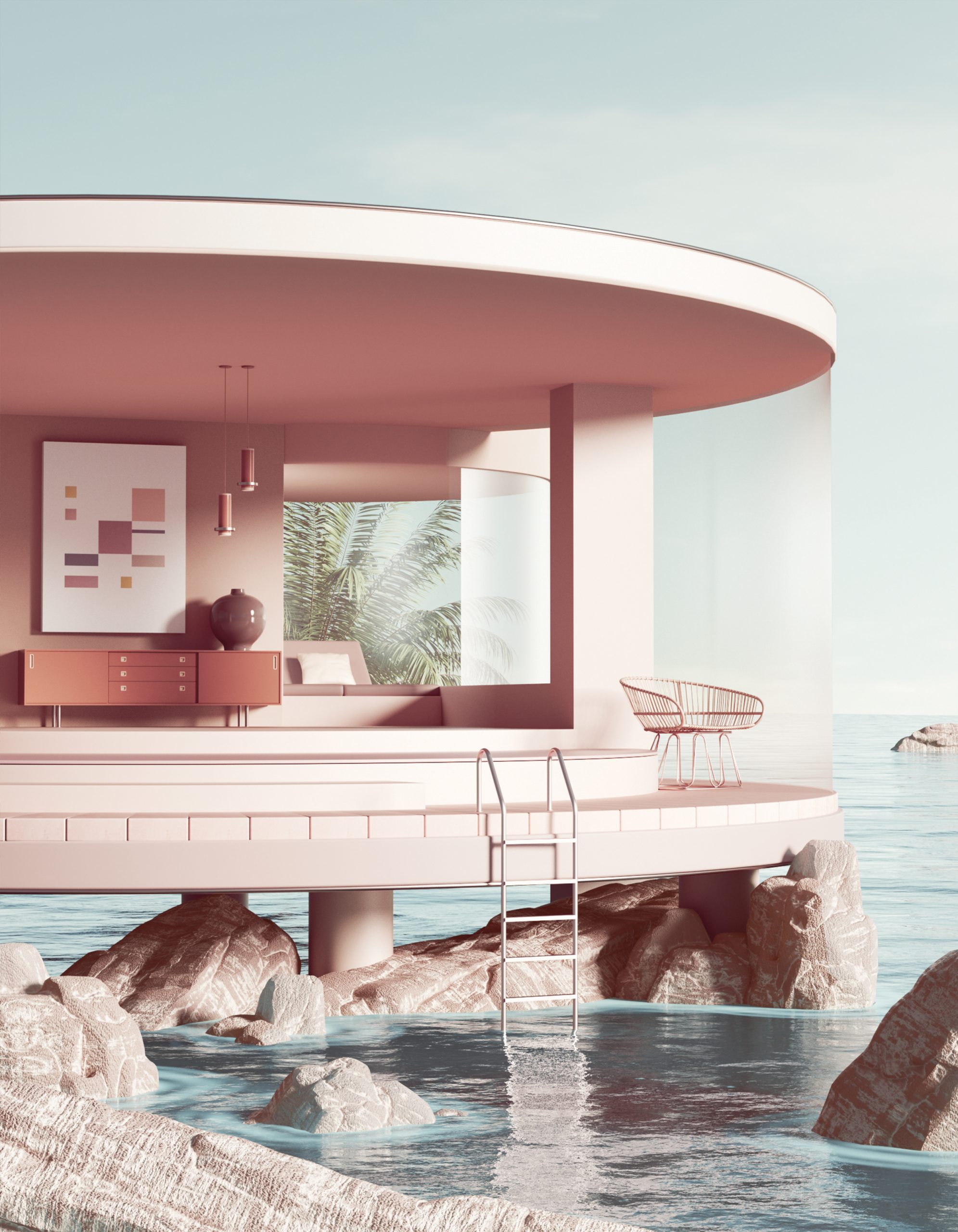
Peter Tarka: Sunbed, Sunday Escape
The ’60s and ’70s meant the renaissance of symbolism in design – the era when the possibilities granted by new materials opened fresh perspectives and when designers truly believed that design was a tool for shaping the future with creators forecasting their concept of the future’s object culture with a bold use of forms and materials. This is also what’s happening today, with the difference that these marvelous dreamscape images guide us into a future that was created via a few hours or days of 3D modeling and digital photo editing, and they reach people quickly, allowing all of us to break free from the dullness of our daily routines for a while.
“Dreamscapes are more than creative images. They’re also doors to a splendid world of illusion. And in this case, everyone can find an illusion to their liking. For us, these images are more about psychedelic worlds, where anybody can dissolve their mind and become a part of an eternal aether or just remain an observer, the muted witness of the beauty of nature,” says the Ouum Studio.
Some think of dreamscapes as an experimental field that could freshen up architecture and interior design in the next years, while others see it as a 21st-century manifestation of artistic self-expression and escapism. These evocative images can conjure up a sense of longing in all of us due to the fact that artists highly skilled in 3D modeling and photo editing bring even the smallest details to perfection, creating photo-realistic worlds. The genre is a great field for experimentation as well. Thanks to a wide range of technological tools, creators can discover their own style: while Peter Tarka revels in subtle details and combines soft tones in his pictures, the Ouum Studio prefers strongly saturated, clear colors.
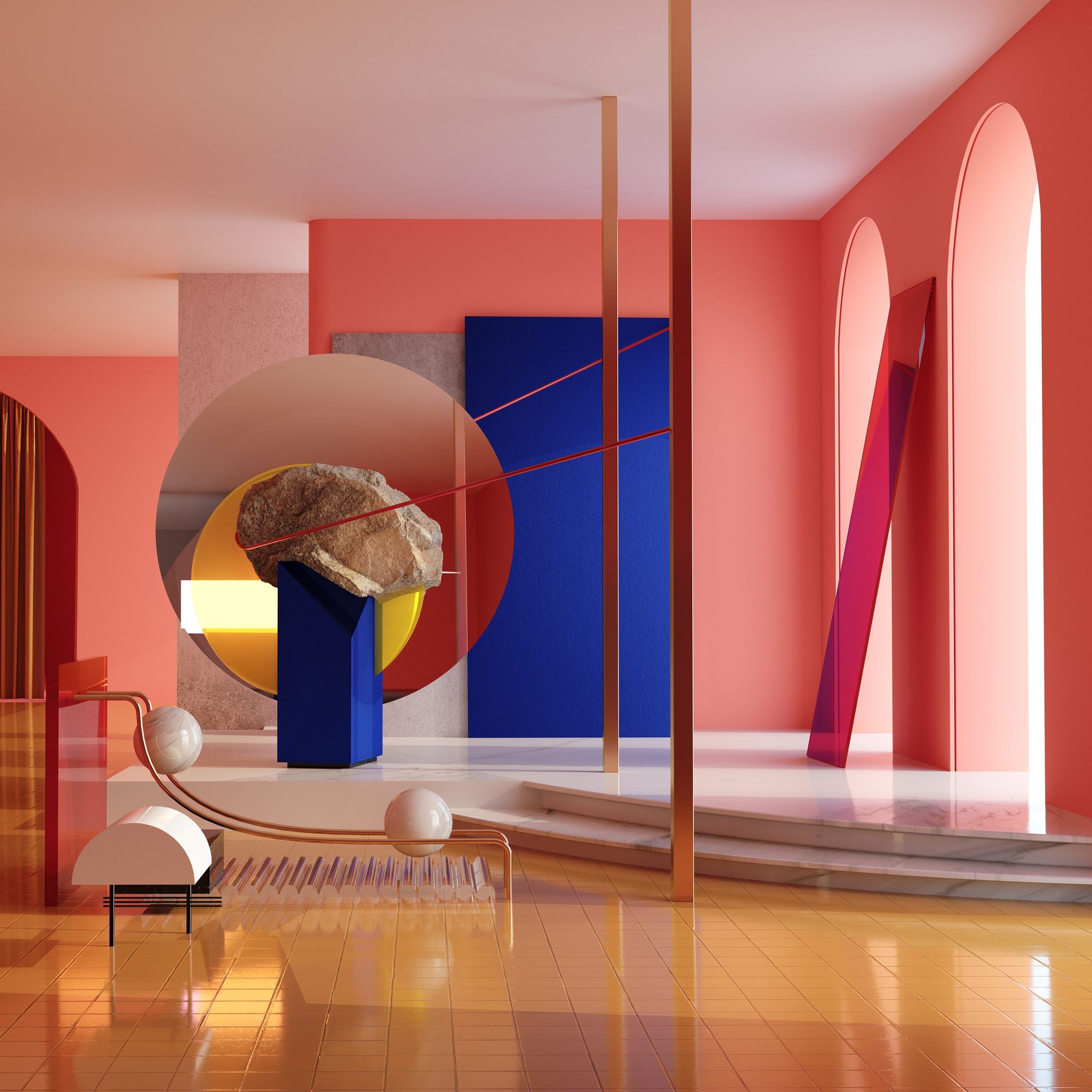
“Creating dreamscapes is a great opportunity to show our skills and our attitude towards digital art per se. It’s an immense sphere where we can explore things like the future’s first astronauts on Mars. We wonder, we adapt, we are the pioneers,” declares the Ouum Studio.
More and more companies are recognizing the advertising potential of 3D fantasy worlds: these dreamlike, soft minimalist spaces with abstract compositions of candy-colored objects create a world that embeds clients’ products in a story, enhances the aesthetics of objects and rise above the conventional visual world of advertisements with their overall impression. The members of the Ouum Studio – who use their creative solutions to produce images that help their clients present their products to the public in an expressive way – see that with the propagation of VR and AR, more research will be conducted in order to see how new image- and space-creating technologies can help capture human perception the best, and how brands can apply this profitably.
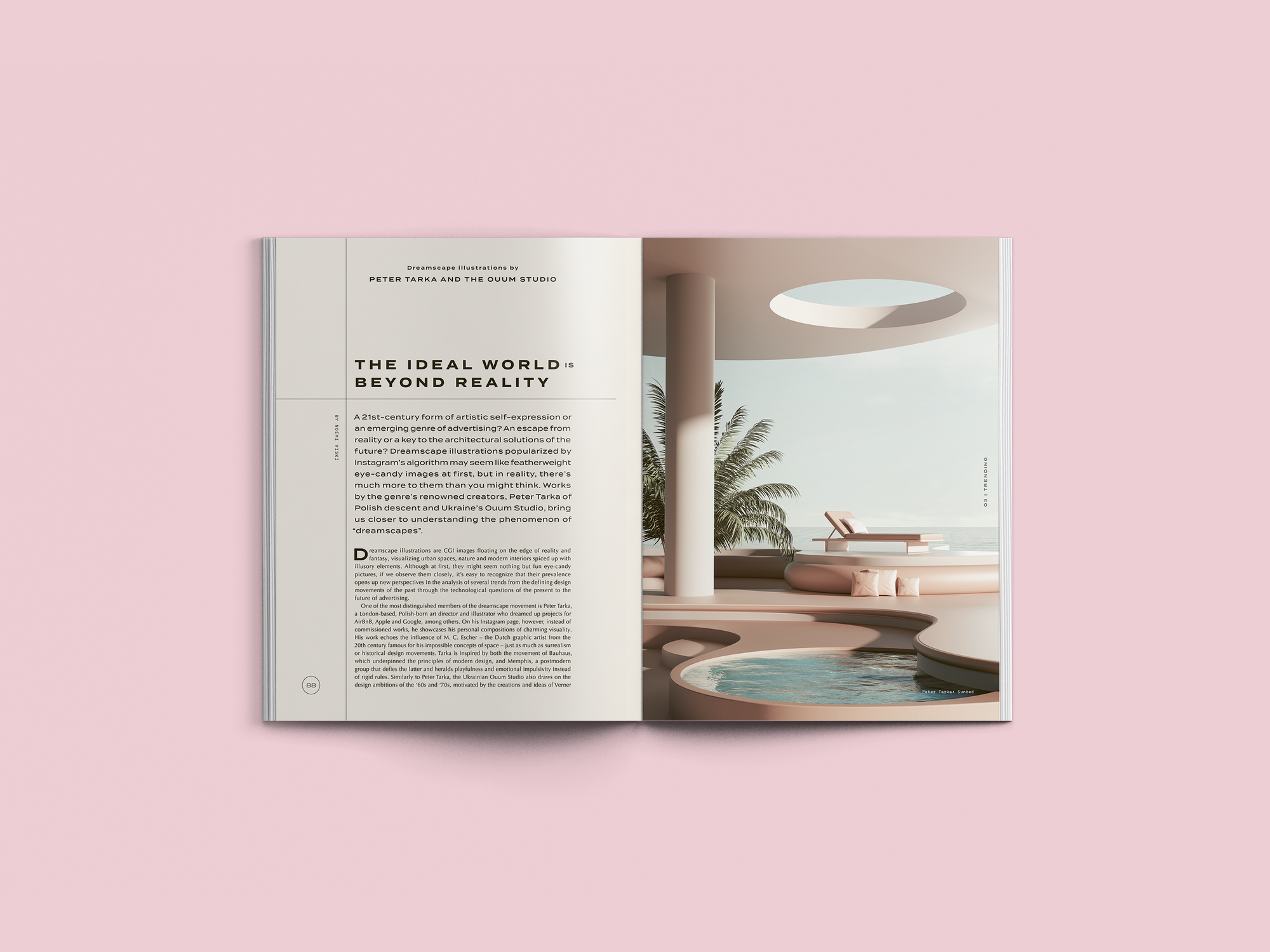

Olympic torchbearers' uniforms made from recycled bottles
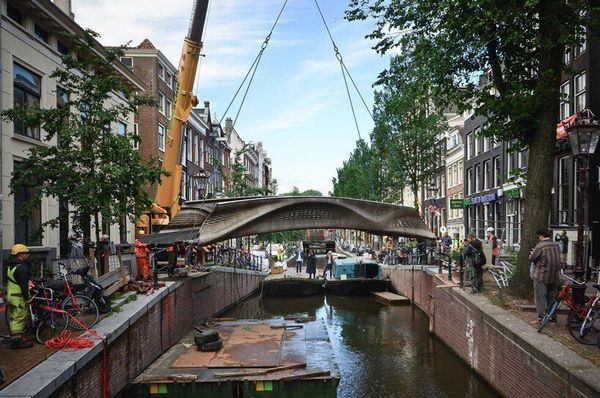
The world's first 3D printed steel pedestrian bridge has been handed over
